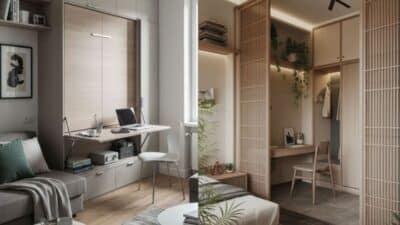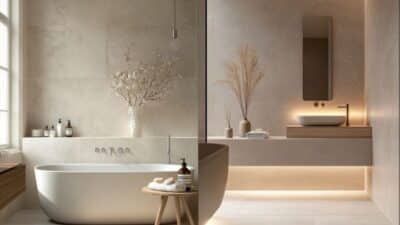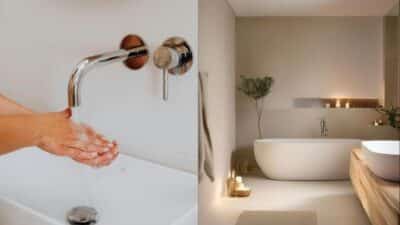Bold colors have the power to transform any space from ordinary to extraordinary, creating environments that reflect your personality and energize your daily life. Many homeowners shy away from vibrant hues, fearing they’ll overwhelm their rooms or quickly go out of style. However, interior design professionals know that when applied strategically, bold colors can elevate your home’s aesthetic while maintaining timeless appeal.
The key to successful bold color interior design lies in understanding how to balance vibrant hues with neutral elements and place them strategically throughout your space. This approach allows you to create visual interest and express your style without creating chaos or overwhelming your senses.
Whether you’re ready to paint an accent wall in deep emerald or introduce colorful furniture pieces, the principles of working with bold colors remain consistent across different rooms and design styles. Understanding color psychology, effective combinations, and strategic placement will help you create spaces that feel both dynamic and harmonious.
Key Takeaways
- Bold colors transform spaces when balanced with neutral elements and placed strategically throughout your home
- Understanding color psychology and effective combinations helps create harmonious yet vibrant interior designs
- Different rooms require specific approaches to bold color application based on their function and natural lighting
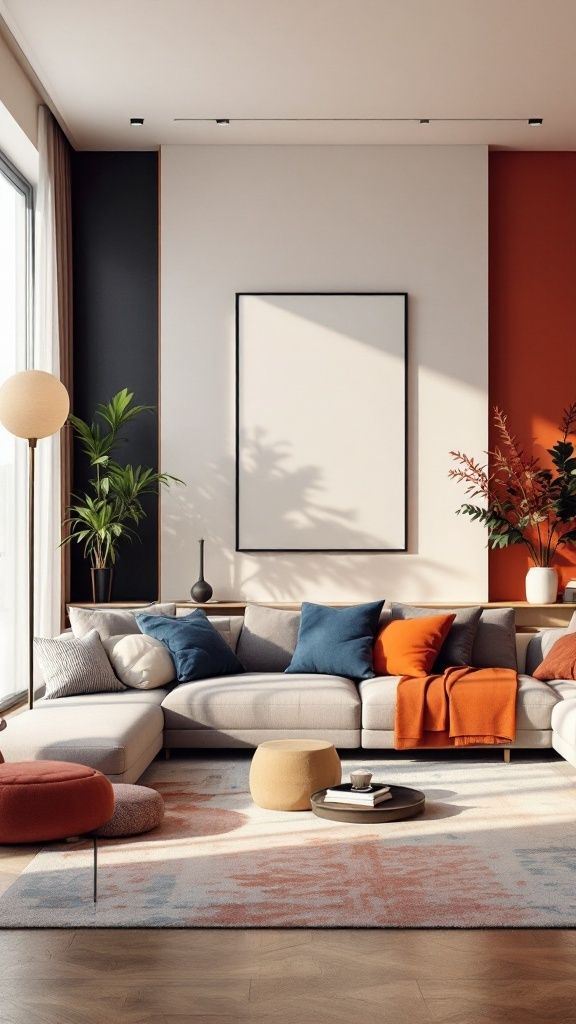
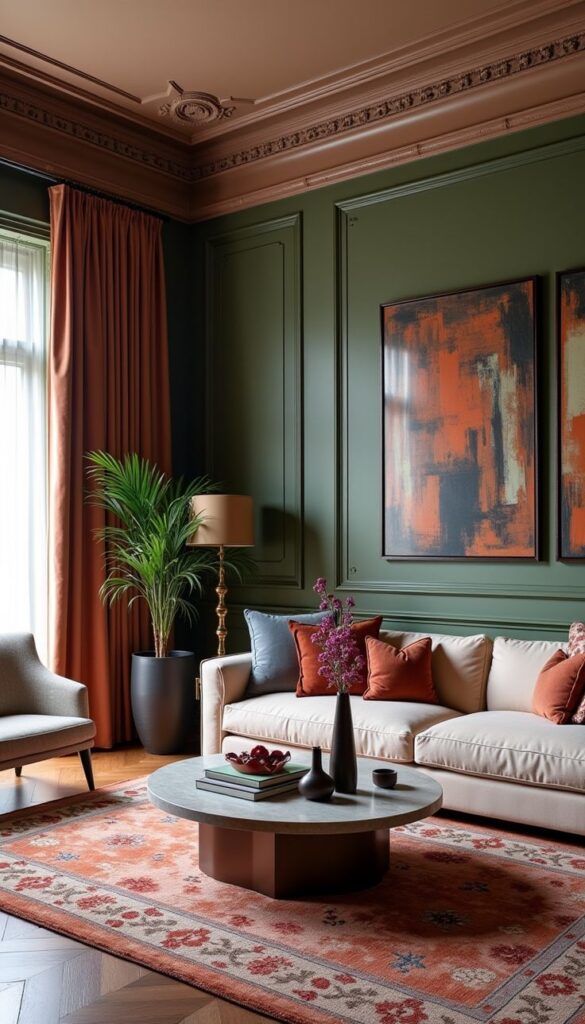
The Power of Bold Colors in Interior Design
Bold colors serve as transformative tools that directly influence mood, create visual interest, and allow homeowners to express their unique style preferences. These vibrant hues work through psychological principles and design fundamentals to reshape how spaces feel and function.
Emotional Impact of Color
Colors trigger immediate emotional responses that can completely alter how you experience a room. Red energizes and stimulates conversation, making it ideal for dining rooms and social spaces.
Blue promotes calm and relaxation, working well in bedrooms and bathrooms. Deep navy creates sophistication while lighter blues feel serene.
Yellow generates warmth and optimism, brightening kitchens and home offices. It increases mental alertness and creates welcoming atmospheres.
Green connects you to nature and reduces stress levels. Forest greens feel grounding while emerald tones add luxury.
Purple conveys creativity and luxury, particularly effective in studies or artistic spaces. Deeper purples create drama while lighter lavenders soothe.
Orange combines red’s energy with yellow’s cheerfulness, perfect for playrooms or workout areas. It encourages social interaction and appetite.
Visual Depth and Personal Expression
Bold colors create layers of visual interest that flat, neutral spaces cannot achieve. Jewel tones like sapphire, emerald, and ruby add richness and depth to rooms.
Color placement affects spatial perception dramatically. Dark colors on accent walls make rooms feel more intimate. Bright colors on far walls appear to bring surfaces closer.
Vibrant hues serve as focal points that guide attention throughout spaces. A bold blue sofa becomes a room’s anchor point around which other elements organize.
Your color choices communicate personal style without words. Confident color combinations reflect creative personalities while sophisticated palettes suggest refined tastes.
Bold colors allow you to break design rules intentionally and create spaces that feel uniquely yours.
Why Use Bold Colors for Interiors
Bold colors solve common design challenges that neutral palettes cannot address. They create instant personality in bland spaces and establish clear room functions.
Interior design benefits from bold colors because they:
- Define spaces in open floor plans
- Create visual flow between rooms
- Add sophistication to basic furnishings
- Increase property appeal and memorability
The color wheel provides scientific guidance for combining bold hues successfully. Complementary colors create high contrast while analogous colors offer harmony.
Bold colors work at any budget level. Paint transforms rooms affordably while bold accessories allow experimentation without permanent commitment.
These colors photograph beautifully, making spaces more shareable and impressive to guests. They demonstrate design confidence and create lasting impressions.
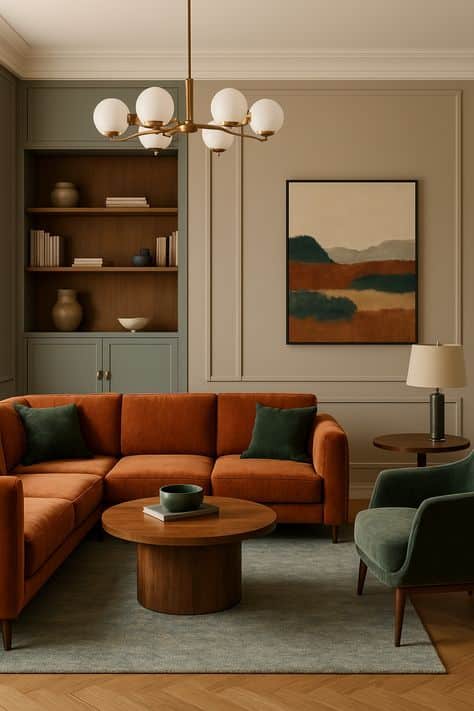
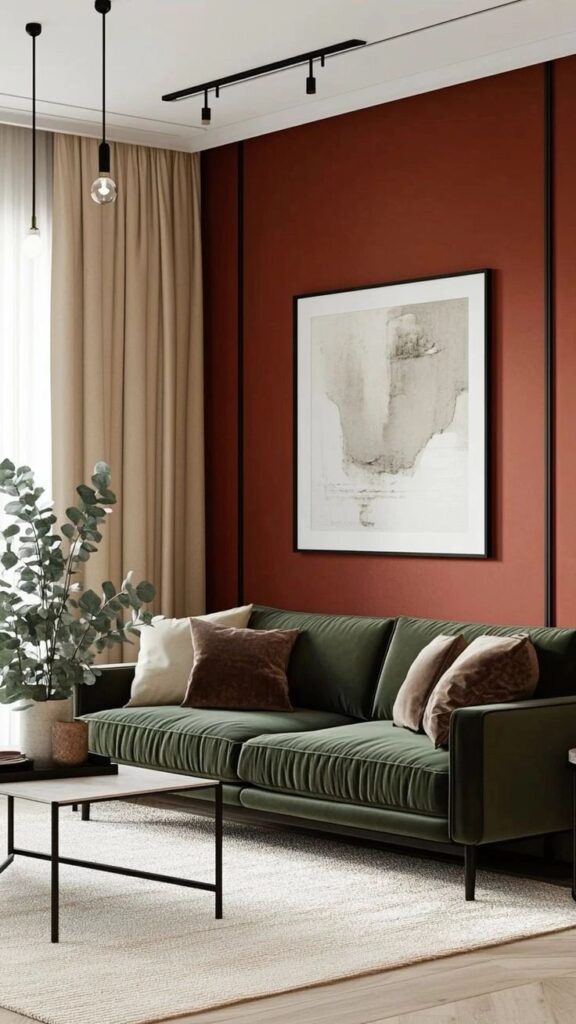
Choosing and Combining Bold Hues Effectively
Bold colors work best when you understand their psychological impact and use proven color theory principles to create harmonious combinations. The color wheel serves as your foundation for pairing vibrant hues that complement rather than compete with each other.
Understanding Color Psychology
Different bold colors trigger distinct emotional responses in your space. Emerald green promotes tranquility and sophistication, making it ideal for bedrooms and home offices.
Cobalt blue creates a sense of calm stability while adding dramatic flair to living areas. This deep blue works particularly well in spaces where you want to encourage relaxation.
Mustard yellow energizes rooms and stimulates creativity. Use this warm hue in kitchens, dining rooms, or creative workspaces where you want to boost activity levels.
Red tones increase energy and passion but can overwhelm if used extensively. Apply red as an accent color to create focal points without dominating the entire room.
Turquoise combines the calming properties of blue with the refreshing qualities of green. This versatile color works well in bathrooms, bedrooms, or any space needing a fresh, spa-like atmosphere.
Using the Color Wheel for Pairings
The color wheel provides three main strategies for combining bold colors effectively. Complementary colors sit opposite each other and create high-contrast, vibrant combinations.
Blue and orange exemplify perfect complementary pairing. Cobalt blue walls paired with orange accents create dynamic visual interest without clashing.
Analogous colors sit next to each other on the wheel and offer harmonious combinations. Emerald green pairs beautifully with blue-green or yellow-green tones for a cohesive look.
Triadic combinations use three evenly spaced colors for balanced vibrancy. This approach requires careful proportion management to avoid overwhelming your space.
Popular Bold Color Combinations
Several proven color combinations deliver consistent results in interior design. Navy blue with mustard yellow creates sophisticated contrast while remaining approachable.
Emerald green with deep burgundy offers rich, luxurious appeal perfect for formal dining rooms or master bedrooms. This combination works especially well with gold accents.
Turquoise and coral provide tropical vibrancy that energizes spaces without feeling overwhelming. This pairing works beautifully in bathrooms, kitchens, or coastal-themed rooms.
Purple and chartreuse green create unexpected drama for bold homeowners. Use these colors in smaller doses through accessories and artwork rather than large surfaces.
Black serves as an excellent anchor for any bold color combination. It prevents bright hues from appearing chaotic while adding sophisticated depth to your color palette.
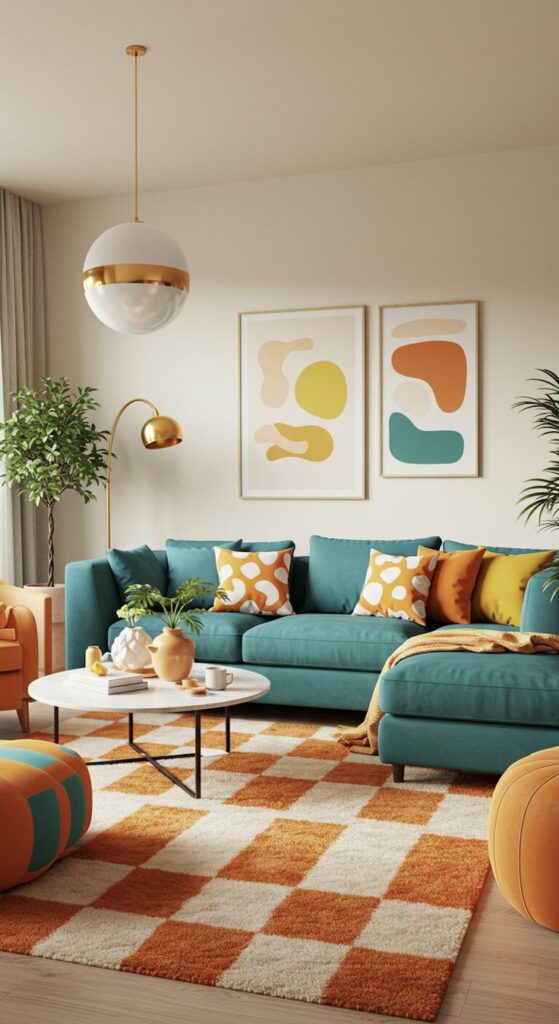
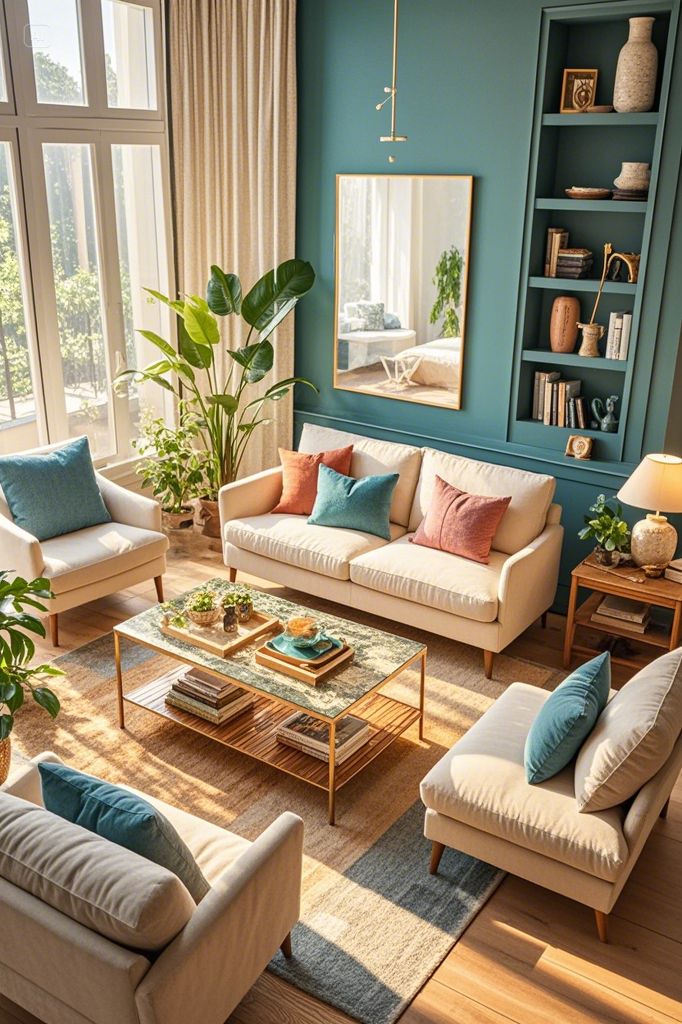
Strategic Placement of Bold Color in Interiors
The key to successfully incorporating bold colors lies in strategic placement that creates visual impact without overwhelming the space. Focus on accent walls, statement pieces, and balanced color distribution to achieve a cohesive design that enhances rather than dominates your interior.
Accent Walls and Color Blocking
Accent walls serve as the foundation for bold color integration. Choose one wall per room to showcase your vibrant hue, typically the wall behind a bed, sofa, or fireplace.
Color blocking creates defined zones within your space. This technique involves painting large geometric sections in contrasting colors or using furniture to create distinct color areas.
Consider these strategic placement options:
- Behind furniture: Paint the wall behind your dining table or headboard
- Architectural features: Highlight built-in shelving or alcoves
- Entryways: Create dramatic first impressions with bold foyer walls
The 60-30-10 rule applies here. Use your bold color for 10% of the room, neutral tones for 60%, and a secondary color for 30%. This creates visual balance while allowing your accent wall to command attention.
Statement Furniture and Decor
Bold furniture pieces anchor your color scheme without requiring permanent changes. A vibrant sofa, dining chairs, or coffee table can transform your space instantly.
Statement furniture works best when it contrasts with neutral backgrounds. Place a bright blue sectional against white walls or position emerald green dining chairs around a natural wood table.
Layer bold accents through accessories:
- Throw pillows and blankets
- Artwork and wall sculptures
- Lamps and lighting fixtures
- Rugs and window treatments
Limit bold furniture to one or two pieces per room. This prevents color competition and maintains visual hierarchy. Your statement piece should complement, not clash with, your accent walls.
Balancing Bold Accents with Neutral Tones
Neutral tones provide essential breathing room for bold colors. White, beige, gray, and natural wood tones create calm spaces between vibrant elements.
Use the anchoring technique. Place bold colors against neutral backgrounds to make them appear more sophisticated. A coral accent wall looks refined when paired with crisp white trim and furniture.
Strategic neutral placement:
- Ceiling and three walls in neutral shades
- Large furniture pieces in neutral fabrics
- Window treatments in soft, muted colors
Ground your bold colors with natural materials. Wood floors, stone countertops, and woven textures add warmth while preventing bold colors from appearing harsh or artificial.
Using Patterns and Textures
Bold patterns multiply your color impact through repetition and movement. Geometric wallpaper, striped curtains, and floral upholstery distribute color throughout your space.
Patterned wallpaper creates instant drama on accent walls. Choose patterns that incorporate your bold color along with neutrals for easier coordination with existing decor.
Mix pattern scales for visual interest:
- Large florals with small geometric prints
- Bold stripes with subtle textures
- Solid colors with intricate patterns
Textures soften bold colors and add depth. Velvet cushions, woven baskets, and textured paint finishes make vibrant hues feel more approachable and livable.
Layer different textures in the same color family. Combine smooth ceramic vases with rough jute rugs and glossy paint finishes to create tactile variety while maintaining color cohesion.
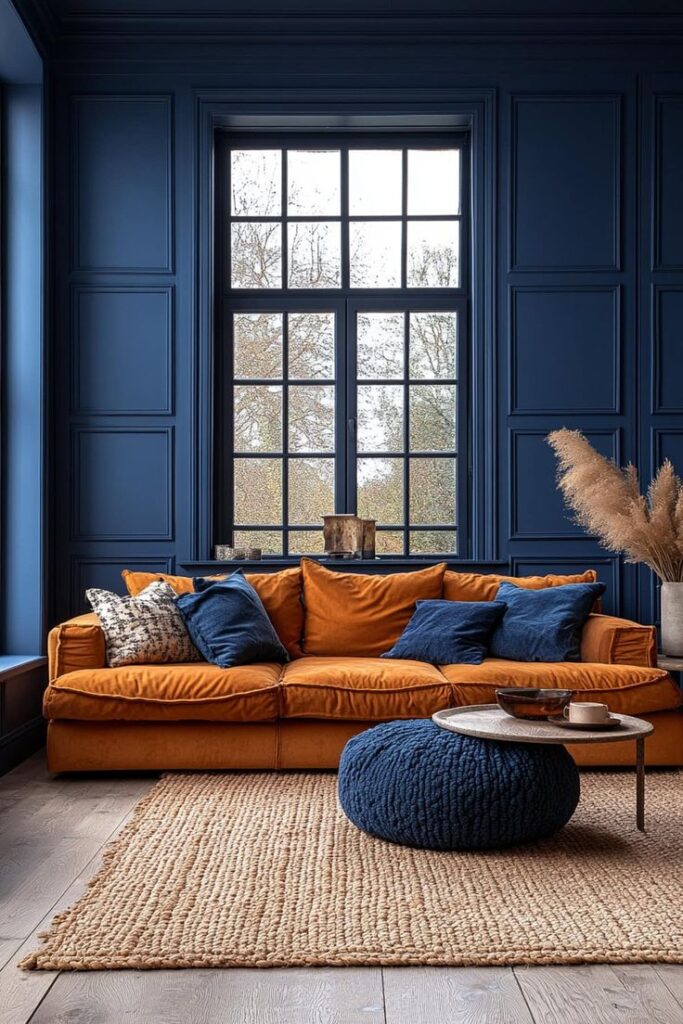
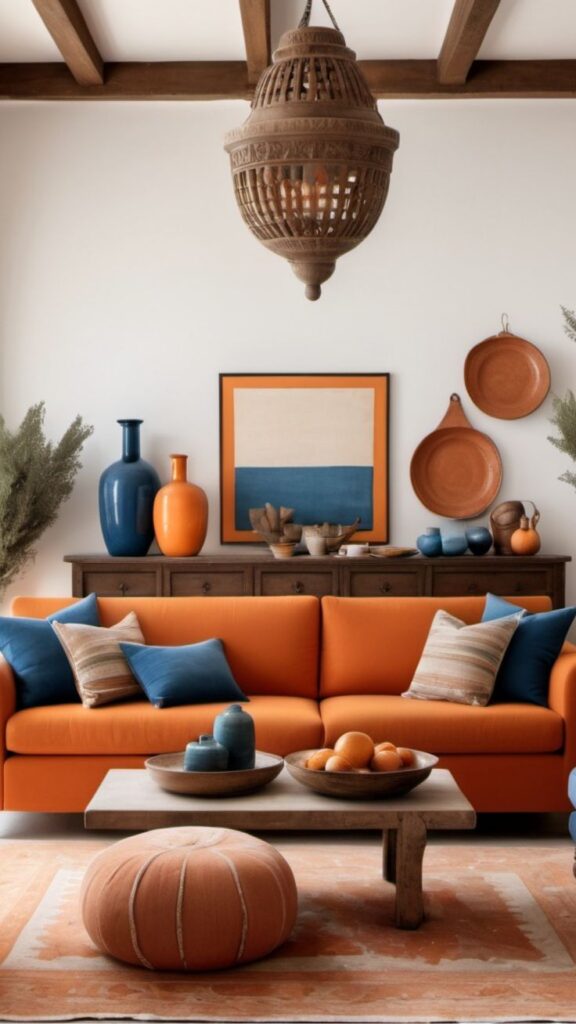
Accessorizing with Bold Elements
Bold accessories offer the most flexible approach to introducing vibrant colors into your space. These elements allow you to experiment with intense hues while maintaining the ability to change your color scheme seasonally or as trends evolve.
Decorating with Throw Pillows and Rugs
Throw pillows serve as the easiest entry point for bold color experimentation. You can mix contrasting colors like emerald green with coral pink, or pair jewel tones with metallic accents. Start with 2-3 pillows in your chosen bold color, then add one neutral pillow to balance the arrangement.
Pillow Combination Strategies:
- Monochromatic: Use varying shades of the same bold color
- Complementary: Pair colors opposite on the color wheel
- Triadic: Select three colors equally spaced on the color wheel
Area rugs anchor your color scheme and define spaces within larger rooms. A bold geometric rug can introduce multiple colors at once, giving you a foundation to build upon. Choose rugs with patterns that incorporate both your bold accent color and neutral tones from your existing furniture.
Consider the room’s traffic flow when selecting rug placement. High-traffic areas benefit from darker bold colors that hide wear, while low-traffic spaces can accommodate lighter, more delicate hues.
Impactful Artwork and Curtains
Artwork functions as a statement piece that sets the tone for your entire color palette. Large-scale pieces with bold colors create focal points and can dictate the room’s energy level. Choose artwork that contains both your bold accent colors and neutral shades to maintain visual cohesion.
Gallery walls allow you to incorporate multiple bold colors through smaller pieces. Mix different mediums like paintings, prints, and photographs to add texture and visual interest. Frame selections should complement rather than compete with the artwork’s bold colors.
Curtains offer substantial visual impact due to their size and positioning. Bold-colored curtains can make windows appear larger and ceilings higher when hung close to the ceiling line. Choose curtains in solid bold colors for maximum impact, or select patterns that incorporate your room’s existing color scheme.
Curtain Hanging Tips:
- Mount brackets 4-6 inches above window frame
- Extend curtain rods 6-8 inches beyond window width
- Choose curtains that touch or puddle slightly on the floor
Vivid Lighting and Pendant Lights
Pendant lights serve dual purposes as functional lighting and colorful design elements. Bold-colored pendant lights work particularly well over kitchen islands, dining tables, or reading nooks. Choose pendant lights in materials like colored glass, ceramic, or powder-coated metal for lasting vibrancy.
Consider the light quality when selecting colored fixtures. Warm-toned bulbs enhance red, orange, and yellow fixtures, while cool-toned bulbs complement blue, green, and purple elements.
Table lamps and floor lamps with bold-colored shades or bases add layers of color throughout your space. These portable fixtures allow you to adjust your color scheme by simply moving them to different locations. Pair bold lamp bases with neutral shades, or choose bold lampshades with neutral bases for different visual effects.
Lighting Color Coordination:
- Warm colors: Pair with warm white bulbs (2700K-3000K)
- Cool colors: Use daylight bulbs (4000K-5000K)
- Mixed palettes: Choose neutral LED bulbs (3500K)
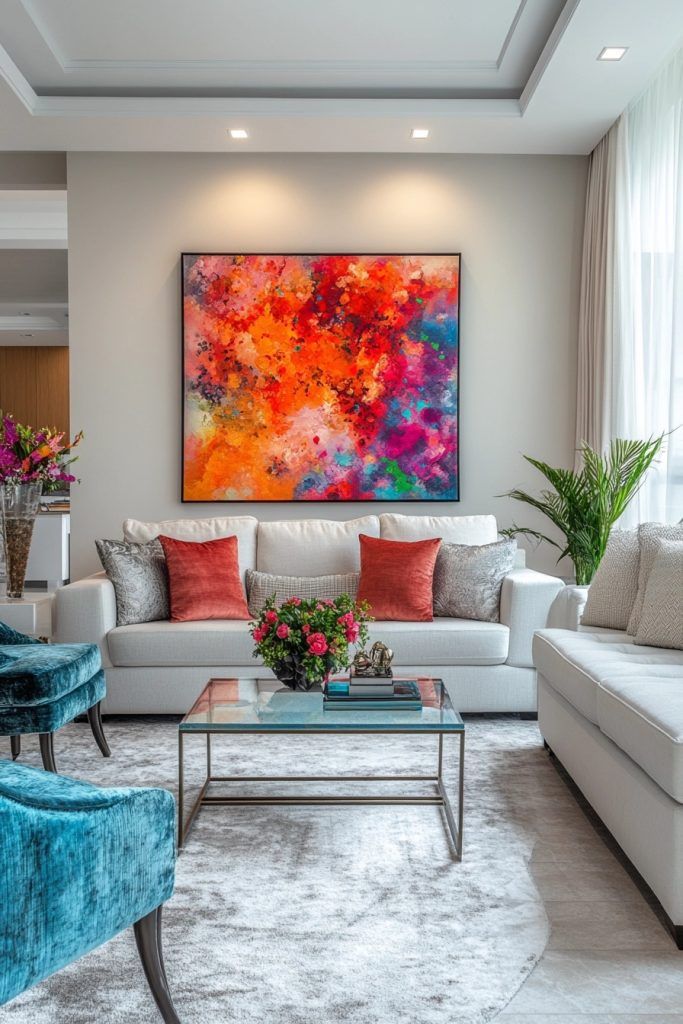
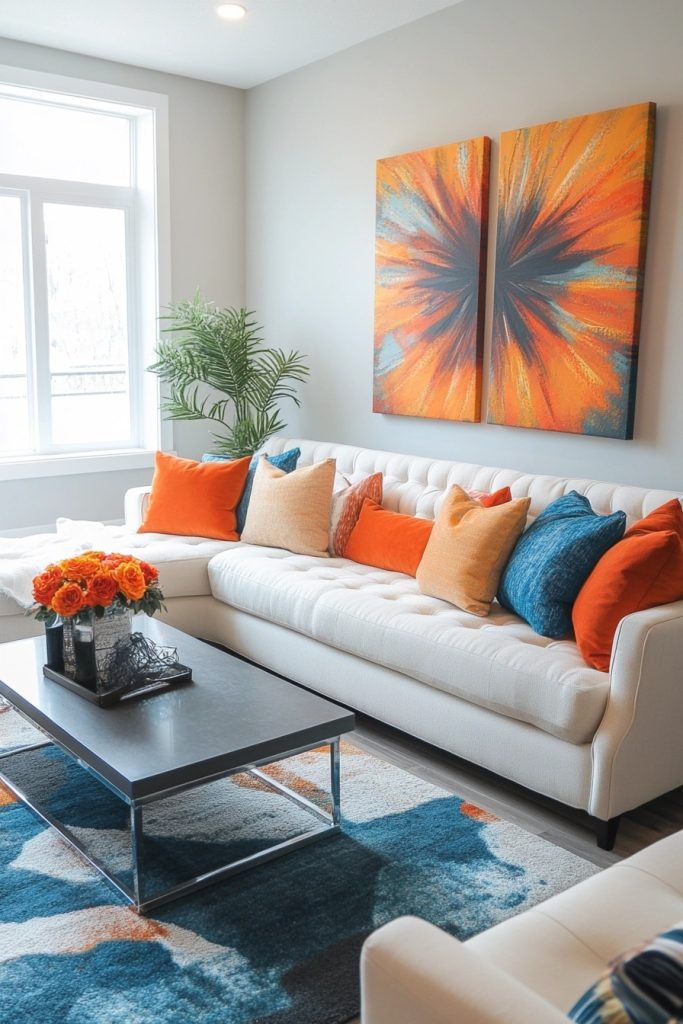
Room-Specific Approaches to Bold Color
Each room in your home presents unique opportunities for incorporating bold colors through strategic design choices. Living spaces benefit from energizing statement pieces, bedrooms can embrace dramatic focal points, and kitchens and bathrooms offer surprising opportunities for personality through vibrant hues.
Living Room Vibrancy
Your living room serves as the perfect canvas for experimenting with bold colors since it’s typically the largest space in your home. A statement wall in deep emerald or rich navy creates visual impact without overwhelming the entire room.
You can introduce vibrant hues through key furniture pieces like a bold-colored sofa or accent chairs. Choose one primary bold color and support it with neutral tones to maintain balance.
Effective Living Room Color Strategies:
- Paint one accent wall in a rich, saturated color
- Use colorful throw pillows and blankets for easy updates
- Select a bold area rug as your room’s foundation
- Display artwork featuring your chosen vibrant hues
Consider the 60-30-10 rule when planning your color scheme. Use neutral tones for 60% of the space, your secondary color for 30%, and reserve bold colors for 10% as accent pieces.
Dramatic Bedrooms
Your bedroom allows for more adventurous color choices since it’s a private space. A bold headboard or accent wall behind your bed creates a striking focal point without disrupting sleep.
Deep jewel tones like sapphire blue or rich burgundy work particularly well in bedrooms. These colors add sophistication while maintaining a restful atmosphere.
Bedroom Bold Color Applications:
- Feature wall behind the headboard
- Colorful bedding and textiles
- Bold window treatments
- Vibrant artwork or wall decor
Balance dramatic colors with neutral bedding and furniture. This approach lets the bold elements shine while keeping the space comfortable and serene.
Kitchens and Bathrooms with Personality
Kitchens and bathrooms benefit from bold colors through strategic applications that enhance functionality. Cabinet colors, backsplashes, and vanities offer excellent opportunities for introducing statement pieces.
In kitchens, consider painting lower cabinets in a bold color while keeping upper cabinets neutral. This creates visual weight and prevents the space from feeling overwhelming.
Kitchen and Bathroom Color Ideas:
- Colorful kitchen island or peninsula
- Bold tile backsplash
- Vibrant bathroom vanity
- Colorful accent walls
Bathrooms can handle surprisingly bold colors due to their smaller size. A powder room painted in a rich color creates a jewel-box effect that feels luxurious and intentional.
- 0shares
- Facebook0
- Pinterest0
- Twitter0

